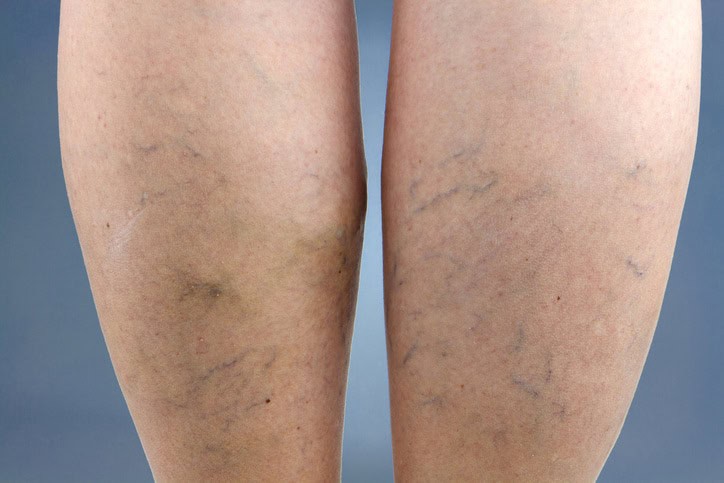Breaking Down the Most Popular Noninvasive Cosmetic Treatments
Noninvasive cosmetic treatments are becoming increasingly popular as a way to address signs of aging and other aesthetic concerns without the need for surgery. These treatments can help reduce wrinkles, improve skin texture, and give the face a more youthful appearance. Here, we will break down some of the most popular noninvasive cosmetic treatments available today.
Botulinum Toxin Type A
Botulinum toxin type A, commonly known as Botox, is one of the most popular noninvasive cosmetic treatments on the market. It works by temporarily paralyzing facial muscles to reduce wrinkles and fine lines in areas such as around the eyes and mouth. Botox injections are relatively quick and painless, with results typically lasting anywhere from three to six months. The treatment is also safe when performed by an experienced medical professional.
Dermal Fillers
Dermal fillers are another form of noninvasive cosmetic treatment that is used to reduce signs of aging such as wrinkles and hollowed cheeks. They work by adding volume to areas of the face that have lost elasticity or fat over time. Common types of dermal fillers include hyaluronic acid-based fillers like Juvederm and Restylane, collagen-based fillers like Radiesse, and calcium hydroxylapatite-based fillers like Bellafill. Results typically last between six months and two years depending on the type of filler used.
Chemical Peels
Chemical peels are a type of noninvasive cosmetic treatment that uses a chemical solution to exfoliate dead skin cells from the surface of the skin. This helps improve skin tone and texture while reducing signs of aging such as fine lines, age spots, acne scars, and sun damage. There are three main types of chemical peels: light (or superficial) peels which use mild acids such as glycolic acid; medium peels which use stronger acids such as trichloroacetic acid; and deep peels which use phenol or carbolic acid.
In Comparison to Invasive Procedures
In comparison to invasive procedures such as facelifts or brow lifts, noninvasive treatments offer several advantages including minimal downtime, fewer risks, less discomfort during treatment, lower cost, and immediate results with no scarring or visible signs that you have had any work done at all. Additionally, because these treatments are not permanent solutions they can be easily adjusted if desired results are not achieved after one session or if changes occur over time due to natural aging processes.
Benefits of Noninvasive Treatments
Noninvasive treatments offer many benefits that make them attractive alternatives to more invasive procedures.
Immediate Results
One benefit is that they provide immediate results without requiring any recovery time afterwards. This means you can go about your daily life right after your appointment without having to worry about taking time off from work or social activities due to side effects or healing time required with more invasive procedures such as surgery or laser resurfacing treatments.
Minimal Side Effects and Downtime
Another benefit is that noninvasive treatments come with minimal side effects compared to more invasive procedures such as surgery or laser resurfacing treatments which can cause significant swelling and bruising that require several days for recovery before normal activities can be resumed again. With noninvasive treatments there may be some redness or swelling but this usually subsides within a few hours after treatment so you can go back to your regular routine almost immediately afterwards with no major disruption in your daily life.
Cost-Effective Option
Noninvasive treatments are also generally much more cost effective than more invasive procedures since they do not require extensive preparation beforehand nor do they require extended recovery times afterwards which can add up quickly in terms of both money spent on medical bills as well as lost wages due to missed work days while recovering from surgery or other invasive procedures.
Safety & Comfort
Finally, noninvasive treatments are also much safer than their more invasive counterparts since they involve minimal risk for complications such as infection or scarring since no incisions are made into the skin during treatment sessions unlike what would be necessary for surgeries like facelifts or brow lifts where incisions must be made in order for access into underlying tissues beneath the skin’s surface in order for these procedures to be performed successfully.. Additionally, because these treatments involve only topical application directly onto the surface of the skin they also tend to be much more comfortable than surgical procedures which often involve cutting through multiple layers of tissue beneath the surface which can lead to discomfort during recovery periods post-treatment session compared with just topical application directly onto the surface layer itself without any cutting involved at all making it much easier for patients who may have anxiety about undergoing surgical procedures in general due to fear associated with this kind of invasiveness overall even though it may still provide better results overall in certain cases depending on what kind of aesthetic goals patients may have specifically in mind for themselves when considering their options overall here at least initially prior to deciding on any particular course action here in this regard at least ideally speaking here overall then finally too then too here now too then too here now too then finally too then too here now too then finally too then too here now too.
Noninvasive cosmetic treatments offer many benefits over traditional surgical procedures including immediate results with no downtime needed afterwards along with minimal side effects compared with more invasive options while still providing excellent aesthetic outcomes overall at relatively low costs compared with their counterparts making them an attractive option for those looking for ways to improve their appearance without going under the knife so-to-speak so-to-say here finally now then finally now then finally now.
Botulinum Toxin Type A
Botulinum toxin type A is one of the most popular noninvasive cosmetic treatments available today. Commonly known as Botox, this treatment works by temporarily paralyzing facial muscles to reduce the appearance of wrinkles and fine lines. It is used on the forehead, around the eyes, between the eyebrows, and around the mouth.
How Does it Work?
botulinum toxin type a works by blocking signals from nerves to the muscles that cause wrinkles. This prevents the muscles from contracting, resulting in a smoother appearance of skin. The effects are temporary and typically last three to four months before another treatment is needed.
What Are The Benefits?
The primary benefit of botulinum toxin type A is that it can reduce or eliminate wrinkles and fine lines without surgery or downtime. It can also be used to treat excessive sweating, migraines, and muscle spasms in certain areas of the body. Additionally, because it is a non-invasive procedure with minimal side effects and risks, it is considered safe for most people.
Who Is a Good Candidate?
Botulinum toxin type A is suitable for both men and women who are looking to reduce or eliminate wrinkles and fine lines on their face without undergoing surgery or other invasive procedures. It is important to note that this treatment should not be used on pregnant or breastfeeding women or anyone under 18 years old. Additionally, those with certain medical conditions such as neuromuscular disorders may not be good candidates for this procedure.
What Should I Expect?
Before receiving botulinum toxin type A injections, patients should consult with their doctor about any potential risks or side effects associated with the procedure. During the injection process itself, patients may experience some mild discomfort but no anesthesia should be required. Afterward, patients may experience some redness and swelling at the injection sites which should resolve itself within a few days. Results will usually become visible within two weeks after treatment and will last up to four months before needing another treatment session.
Dermal Fillers
Dermal fillers are noninvasive cosmetic treatments that provide a more youthful and vibrant appearance by filling in wrinkles, creases, and other signs of aging. These products are injected directly into the skin to restore lost volume and improve the look of fine lines and wrinkles. The most popular types of dermal fillers include hyaluronic acid, calcium hydroxylapatite, and poly-L-lactic acid.
Hyaluronic Acid
Hyaluronic acid is a naturally occurring substance found in the human body that helps to keep skin looking young and healthy. When injected into the skin, it binds with water molecules to create a cushioning effect that fills in wrinkles and adds volume to thinning areas of the face. Hyaluronic acid is suitable for all skin types and can be used on any area of the face or body where wrinkles need to be filled in.
Calcium Hydroxylapatite
Calcium hydroxylapatite is another type of dermal filler made from tiny particles of calcium suspended in a gel-like solution. It works by helping to stimulate collagen production while providing immediate volume to areas of the face that need it most. This type of dermal filler is often used for deeper wrinkles around the mouth, chin, and cheeks.
Poly-L-lactic Acid
Poly-L-lactic acid is a synthetic material that helps to stimulate collagen production over time while providing immediate volume to areas needing it most. This type of dermal filler is often used for larger areas like the temples, cheeks, jawline, chin, and nose. Results typically last up to two years or more with proper maintenance.
Overall, dermal fillers are an excellent choice for those looking for a noninvasive way to improve their appearance without surgery or downtime. They can be used on any area of the face or body where wrinkles need to be filled in and can last anywhere from six months up to two years depending on which type is chosen.
Chemical Peels
Chemical peels are a popular noninvasive cosmetic treatment that involve the application of a chemical solution to the face, neck, or hands to improve the skin’s appearance. This procedure is often used to treat wrinkles, acne scars, and sun damage. Depending on the strength of the peel, it can also be used to reduce age spots, freckles, and melasma.
The most commonly used chemical peels are alpha-hydroxy acids (AHAs), trichloroacetic acid (TCA), and phenol. AHAs are milder than other chemical peels and are best used for lightening skin discoloration and treating mild sun damage. TCA is suitable for more severe cases of sun damage and wrinkles. Phenol is the strongest type of peel available and is typically reserved for deep wrinkles or precancerous growths on the skin.
Benefits
Chemical peels offer many benefits compared to other noninvasive treatments. They can provide more dramatic results in a shorter amount of time than other treatments such as dermal fillers or Botox injections. In addition, they can help tighten loose skin, reduce pore size, and improve skin texture.
Risks
Although chemical peels are generally safe when performed by an experienced professional, there are some risks associated with this procedure. These include redness, swelling, burning sensation during treatment, scarring, infection, changes in skin color or texture, and sensitivity to sunlight after treatment. For this reason, it is important to discuss any potential risks with your doctor before undergoing a chemical peel.
In comparison to Invasive Procedures
invasive cosmetic procedures are much more invasive than noninvasive treatments, requiring anesthetic and a longer recovery period. These treatments are usually used for more serious issues such as facial reconstruction or the removal of excess skin due to significant weight loss. Invasive treatments can also be expensive, with costs ranging from several hundred to several thousand dollars depending on the procedure. Additionally, they often require multiple sessions to achieve the desired results.
Noninvasive treatments, on the other hand, offer a less intensive option with fewer risks and side effects than invasive treatments. They are generally less expensive and can be completed in a single session. noninvasive treatments also have shorter recovery times and minimal downtime, allowing patients to resume their daily activities almost immediately after treatment.
Overall, noninvasive cosmetic treatments offer a safe and effective way to improve one’s appearance without the risks associated with invasive procedures. While these treatments may not provide as dramatic results as invasive procedures, they are a great option for those who want subtle improvements without having to go through lengthy recovery periods or pay high costs.
Benefits of Noninvasive Treatments
Noninvasive cosmetic treatments are becoming increasingly popular due to their numerous benefits. These treatments provide patients with immediate results, minimal side effects and downtime, cost-effectiveness, and safety and comfort.
Immediate Results
One of the main advantages of noninvasive cosmetic treatments is that the results are often visible immediately after the procedure. Botulinum toxin type A (Botox) injections can reduce wrinkles within days, while dermal fillers can add volume to the face in minutes. Chemical peels can also provide immediate results by removing dead skin cells and revealing a more youthful complexion.
Minimal Side Effects and Downtime
Another benefit of noninvasive cosmetic treatments is that they typically have minimal side effects and require no downtime. Botox injections may cause slight redness or swelling at the injection site, but these side effects usually fade quickly. Dermal fillers may also cause temporary redness or swelling for a few days, but this should not interfere with normal activities. Chemical peels can sometimes cause some mild stinging or burning during the procedure, but this usually subsides soon after it is completed.
Cost-Effective Option
Noninvasive cosmetic treatments are often much more cost-effective than invasive procedures such as facelifts or nose jobs. Botox injections typically cost around $200 per session, while dermal fillers usually range from $500-$1,000 per session depending on the area being treated. Chemical peels can cost anywhere from $100-$400 depending on the type of peel used. In comparison, invasive procedures such as facelifts can cost up to $20,000 or more depending on how extensive they are.
Safety and Comfort
Noninvasive cosmetic treatments are generally considered very safe when performed by a qualified professional. Botox injections use a purified form of botulinum toxin that has been approved by the Food and Drug Administration (FDA). Dermal fillers use hyaluronic acid which is naturally found in the body and is generally well-tolerated by most people. Chemical peels use gentle acids that exfoliate away dead skin cells without causing any damage to healthy tissue beneath them. Additionally, these treatments are relatively comfortable for most patients with only minor discomfort during the procedure itself.
Overall, noninvasive cosmetic treatments offer numerous benefits for those looking to improve their appearance without undergoing surgery. These treatments provide immediate results with minimal side effects and downtime as well as being a more cost-effective option compared to invasive procedures. Furthermore, they are safe and relatively comfortable for most patients making them an attractive alternative for those seeking to enhance their appearance without going under the knife.
Immediate Results
Noninvasive cosmetic treatments typically provide patients with immediate results. Botulinum Toxin Type A, commonly known as Botox, can be used to reduce wrinkles and fine lines in the face within a few days of treatment. Dermal fillers are used to add volume to the face, and many patients notice an immediate improvement in their appearance following treatment. Chemical peels can be used to improve the texture of the skin and reduce discoloration, with most patients noticing a difference in their skin shortly after treatment.
In comparison to invasive procedures, noninvasive treatments provide quicker results with fewer risks and side effects. Invasive treatments, such as facelifts or liposuction, require surgery and generally take longer for patients to see results. Noninvasive treatments are much less risky and require no downtime for recovery, allowing patients to get back to their daily activities right away.
Benefits
Noninvasive treatments offer several benefits that make them an attractive option for many people seeking cosmetic improvements. The immediate results that come from these treatments make them appealing to those who want to see changes in their appearance quickly without undergoing surgery or taking prolonged time off for recovery. Additionally, noninvasive treatments have minimal side effects and downtime compared to invasive procedures, making them much safer for patients. Finally, noninvasive treatments are often more cost-effective than invasive options due to the shorter recovery times and lower risk of complications associated with surgery. Furthermore, they are usually performed under local anesthesia in a doctor’s office setting which makes them a safe and comfortable option for most people.
Noninvasive treatments provide immediate results, minimal side effects, shorter recovery times, and cost-effectiveness.
Minimal Side Effects and Downtime
Noninvasive cosmetic treatments are known to have minimal side effects and downtime, compared to other more invasive procedures. Botulinum toxin type A, dermal fillers, and chemical peels all have a relatively low risk of side effects, with the most common being redness, swelling, or bruising at the injection site. These side effects usually subside within a few days or weeks.
Botulinum Toxin Type A
Botulinum toxin type A is one of the safest noninvasive treatments available on the market today. The most common side effect is temporary muscle weakness in the area where the injections were administered. This may lead to difficulty in performing certain facial expressions or movements. other possible side effects include redness, swelling, bruising, headache, nausea, and drooping eyelids. However, these symptoms usually resolve within a few days or weeks after treatment.
Dermal Fillers
Dermal fillers can also cause some minor side effects such as redness, swelling, bruising, tenderness at the injection site, and itching. These symptoms typically resolve within a few days or weeks after treatment. It is also possible for dermal fillers to cause an allergic reaction in some people; however this is rare and can be easily treated with medication if it does occur.
Chemical Peels
Chemical peels are generally safe when performed by an experienced professional. Common side effects include redness, dry skin, itching, stinging sensation during application of the peel solution and flaking of the skin afterwards. These side effects usually subside within a few days or weeks after treatment and can be managed with moisturizers and other skincare products prescribed by your doctor.
Cost-Effective Option
Noninvasive cosmetic treatments are an excellent and cost-effective option for those looking to achieve a more youthful appearance without the need for surgery. Botulinum toxin type A, dermal fillers, and chemical peels are all relatively inexpensive procedures when compared to more invasive treatments such as face lifts and liposuction. Botox injections typically range from $100-$400 per session, while dermal fillers can cost anywhere from $500 to $1,000 per syringe. Chemical peels can cost between $250 and $1,000 depending on the type of peel used.
These treatments are not only affordable but also provide long-lasting results that can last up to two years with proper maintenance. The cost of noninvasive procedures is often far less than that of more invasive ones, which can range into the thousands of dollars and require extensive recovery time. Furthermore, noninvasive treatments are typically covered by health insurance plans or flexible spending accounts (FSAs).
For those looking to improve their appearance without breaking the bank, noninvasive cosmetic treatments offer a safe and effective alternative to expensive and invasive surgeries. With minimal downtime and side effects, these treatments are an ideal choice for achieving desired aesthetic results without sacrificing comfort or safety.
Noninvasive cosmetic treatments are cost-effective, long-lasting, and often covered by health insurance plans.







